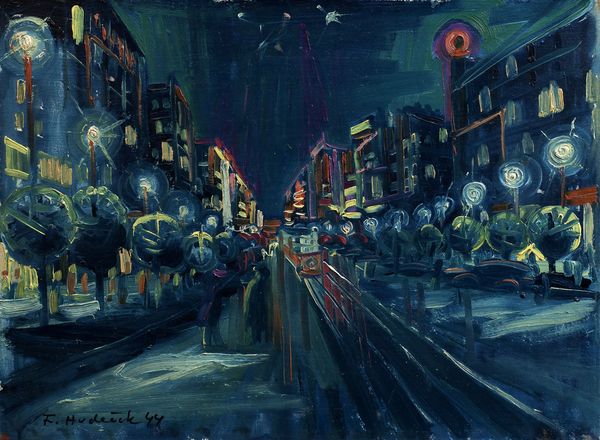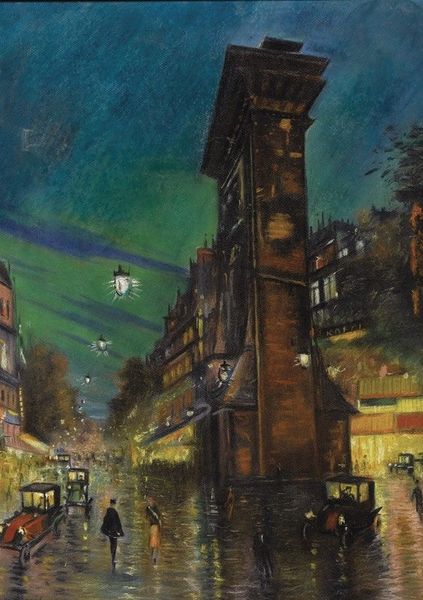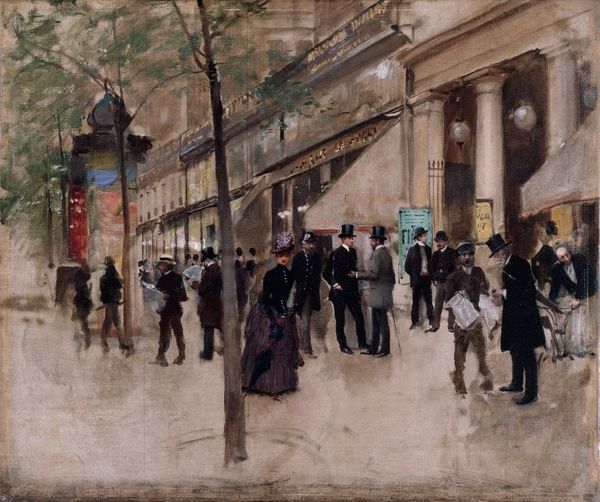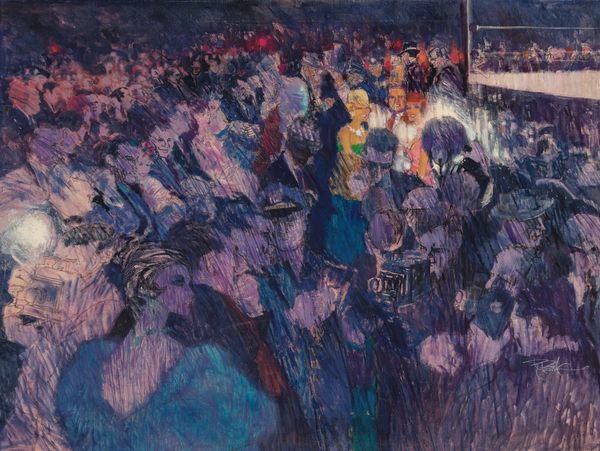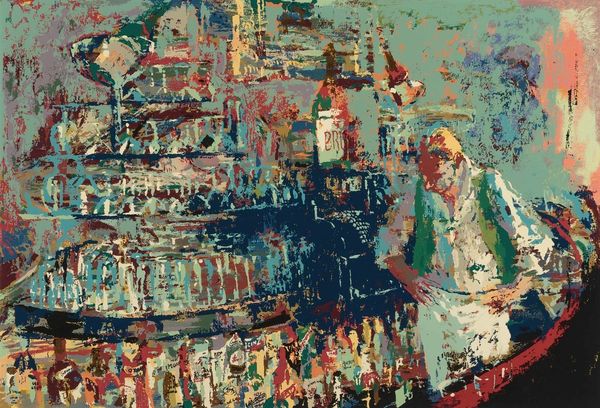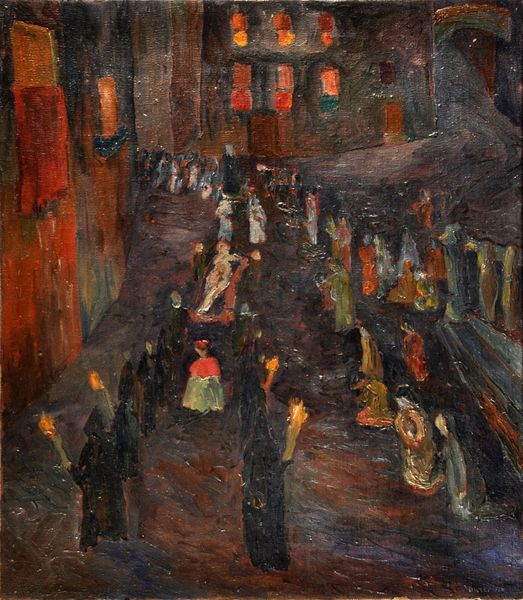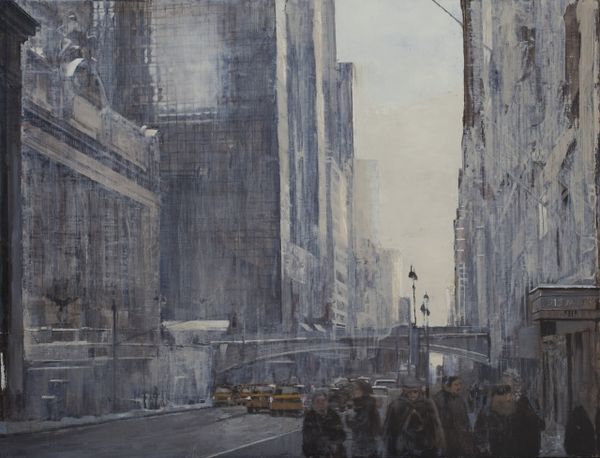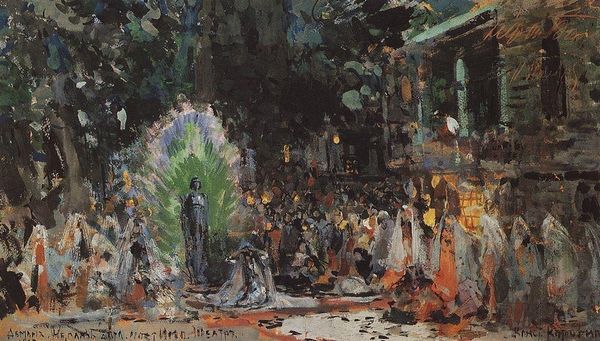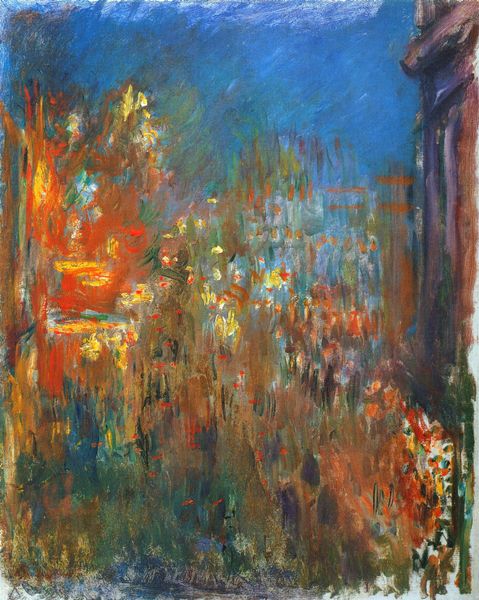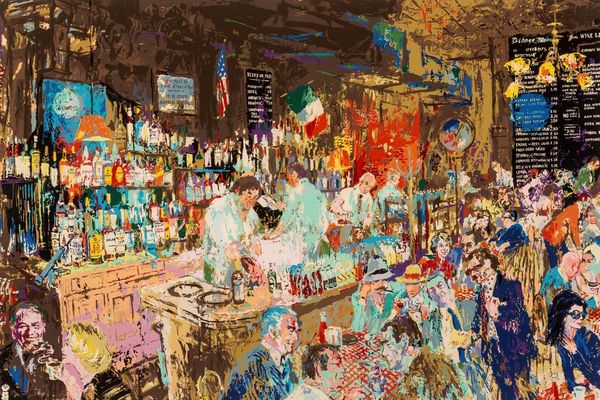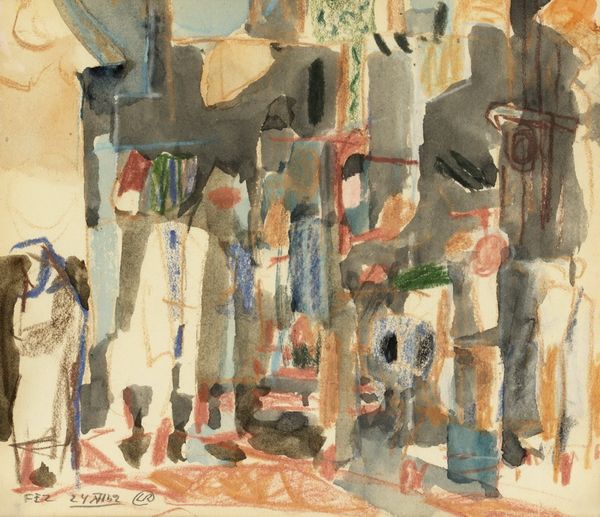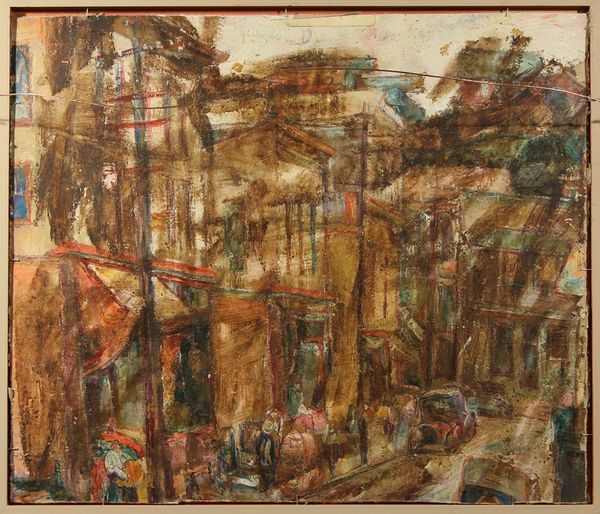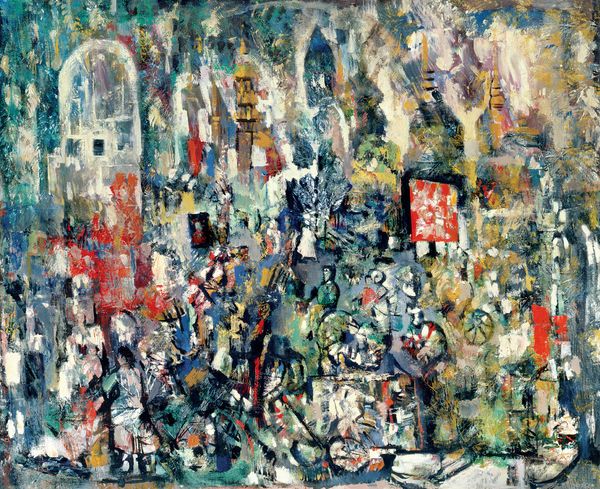
painting, oil-paint
#
painting
#
impressionism
#
oil-paint
#
oil painting
#
cityscape
#
academic-art
#
realism
Copyright: Public domain
Curator: This painting, “Semana Santa, Seville,” completed in 1888, comes to us from Francis Davis Millet. What's your initial take? Editor: Haunting. It's a cityscape, but that subdued palette and the figures... I’m drawn to the ghostly atmosphere it evokes. It feels almost dreamlike. Curator: Indeed. Let's talk process. Millet was clearly fascinated by the visual culture of Seville’s Holy Week. You see the obvious realism but it almost edges towards impressionism with those brushstrokes capturing light and texture, particularly noticeable if you look closely at the layers of paint giving the street lights their diffused glow. It makes you think about how those long, elaborate processions require countless hours of labor—from sewing elaborate robes to crafting intricate floats and wax candles. Editor: Yes, that contrast between darkness and luminosity certainly underscores the drama. The candles themselves—repetitive, uniform, each carried by a hooded figure... Aren’t those figures penitents? It speaks volumes about ritual, faith, and public performance. The iconography practically screams collective mourning. Curator: The materials really support that somber, spiritual feel, wouldn’t you say? The pigment choices create that almost oppressive atmosphere. This isn’t a celebration; it’s a public display of penance, materially constructed. It almost forces one to consider who profits, from wax manufacturers to tailors and more. What sustained them? Editor: Absolutely, those pointed hoods, the "capirotes," they’re laden with cultural meaning and visual memory. They transcend the immediate religious context and have acquired darker, even controversial, associations over time. But even without that, they serve to conceal identity, unifying the wearers in shared devotion, which creates an unnerving effect in itself. Curator: The way he built this canvas from the ground up, brushstroke by brushstroke. Each one signifies not only form, and value, but the overall system propping up ritualized display itself. In an event where status plays out very vividly in many facets of Seville life, Millet seems to mute any class distinctions beneath shadow. Editor: Seeing the city shrouded in such mysterious symbolism allows us to understand Holy Week as not just a religious observation, but a profound expression of shared identity, mortality, and cultural memory. Millet somehow captured its deep and complex heart. Curator: Thinking through the paint he selected and the craftsmanship he highlighted invites a broader reflection, I think, upon material devotion and public practice, really prompting questions about how religious customs reinforce entire economies and class divisions through participation. Editor: A city cloaked in layered meanings indeed.
Comments
No comments
Be the first to comment and join the conversation on the ultimate creative platform.
